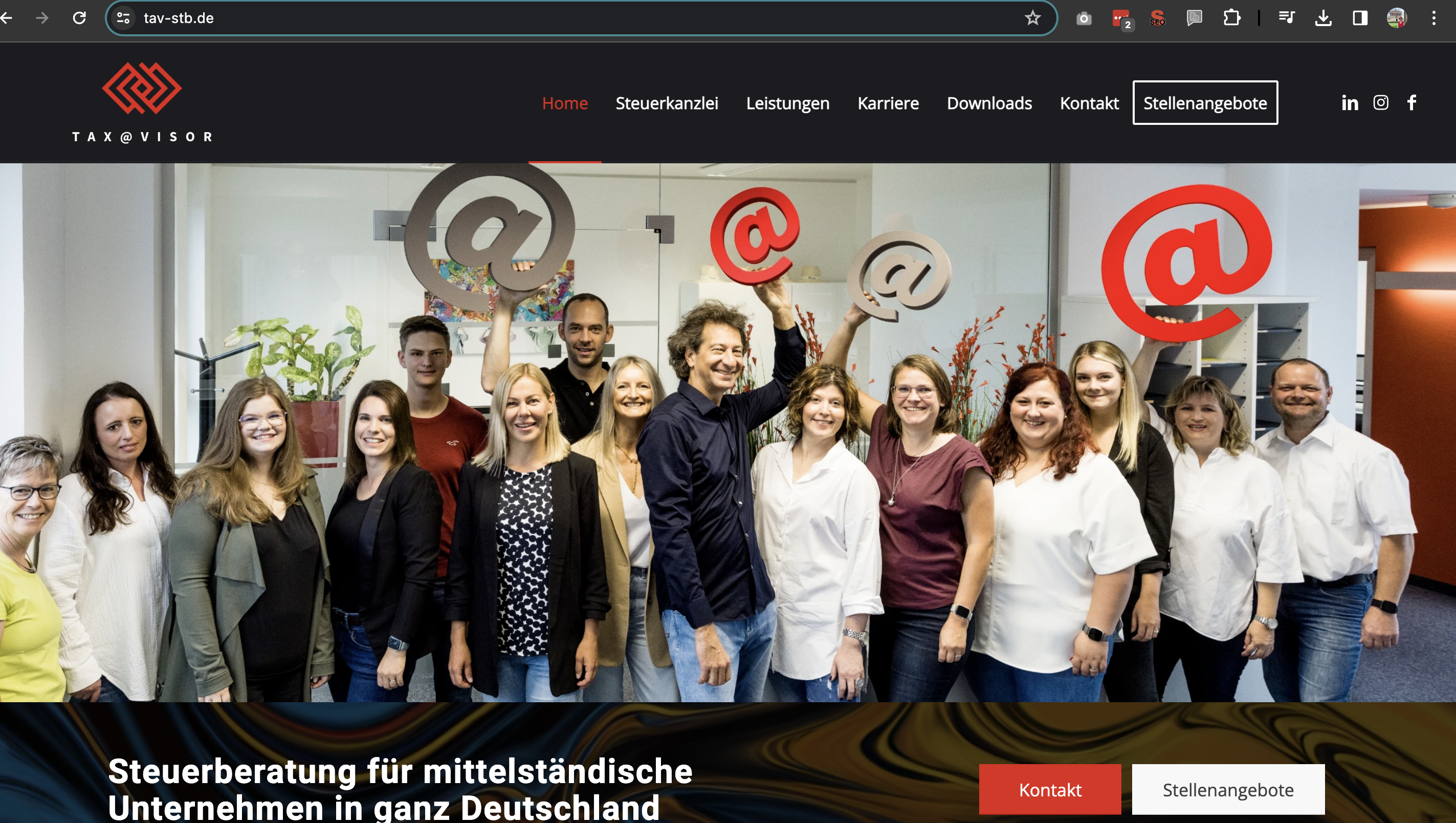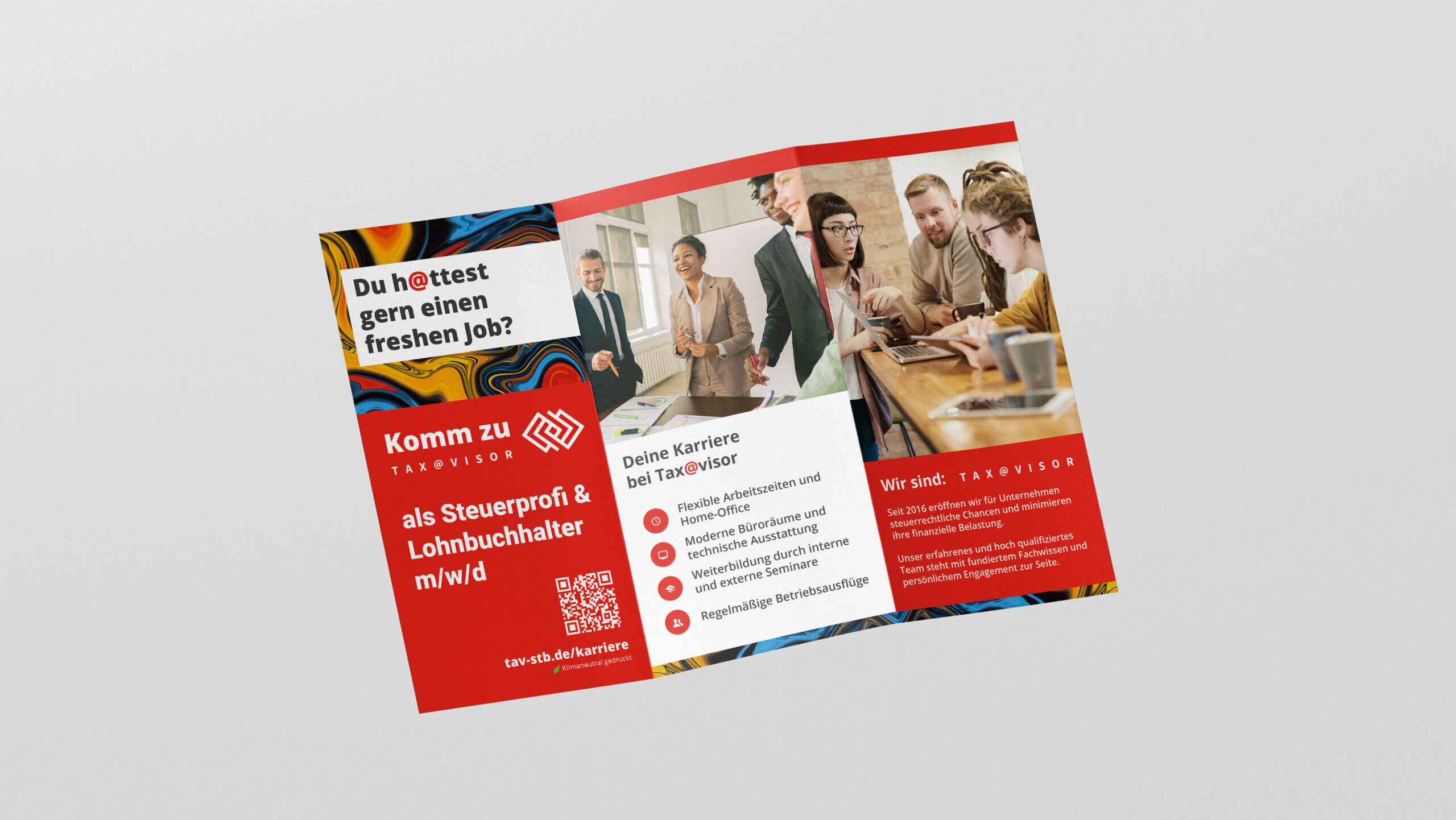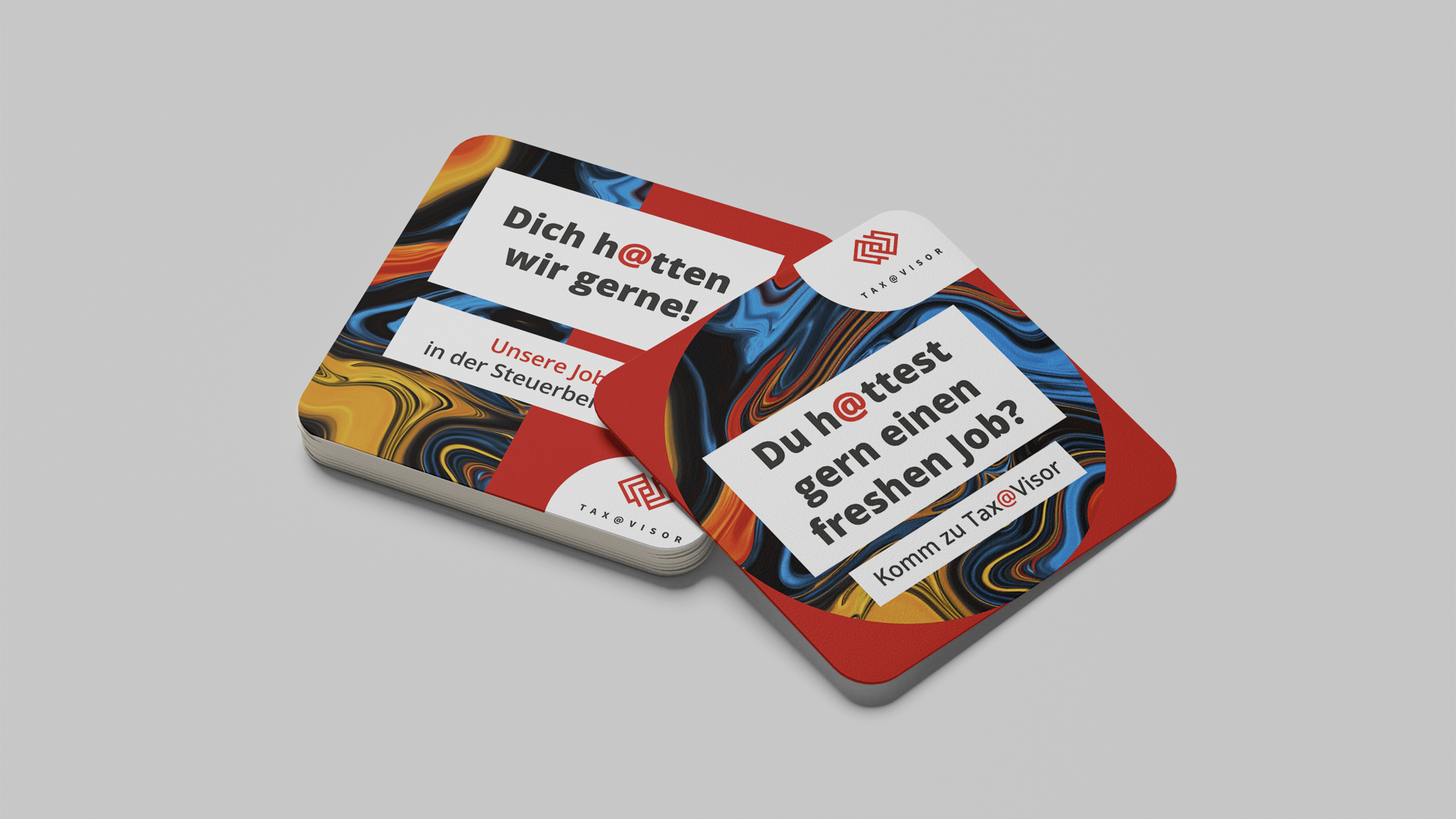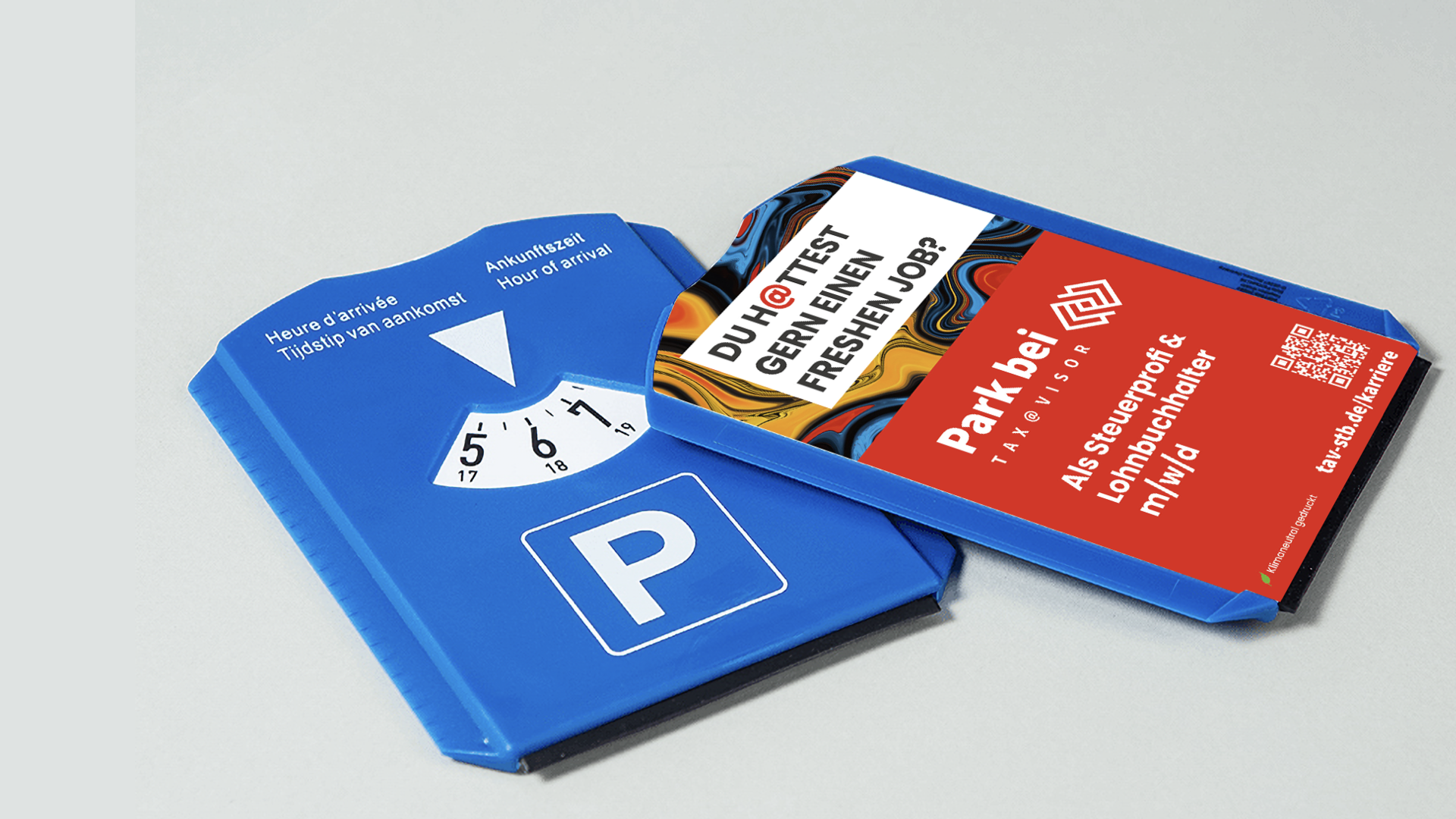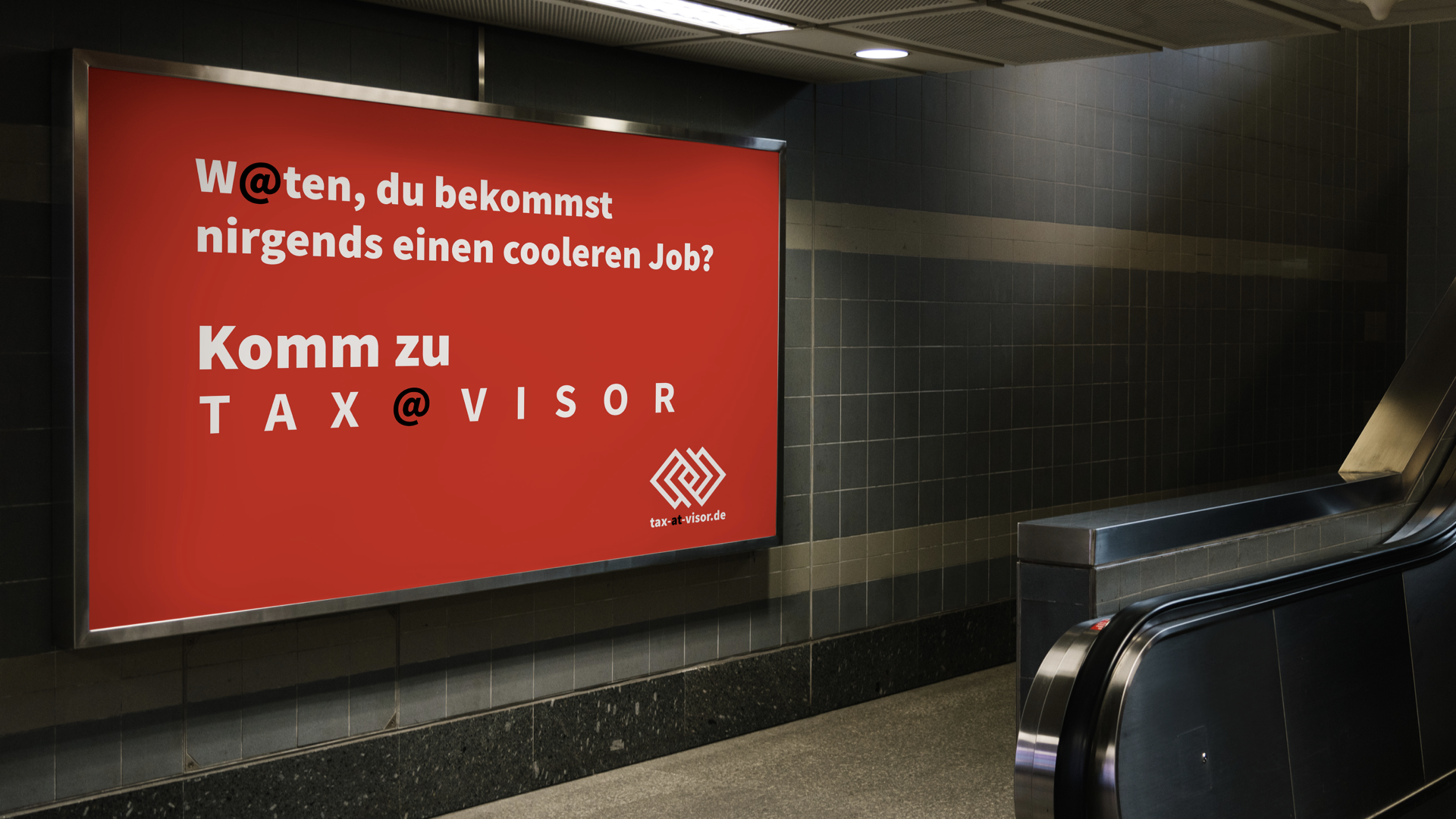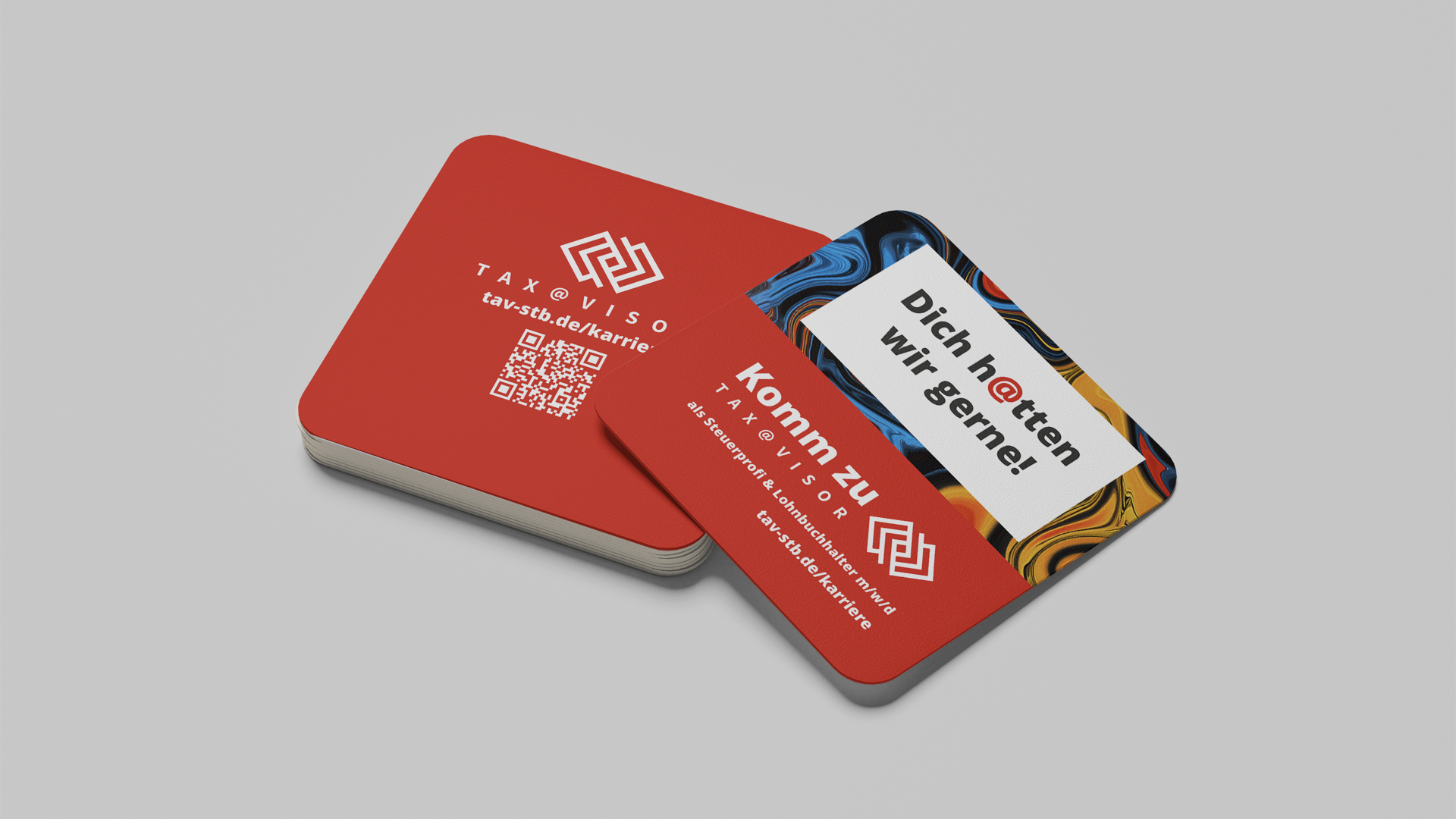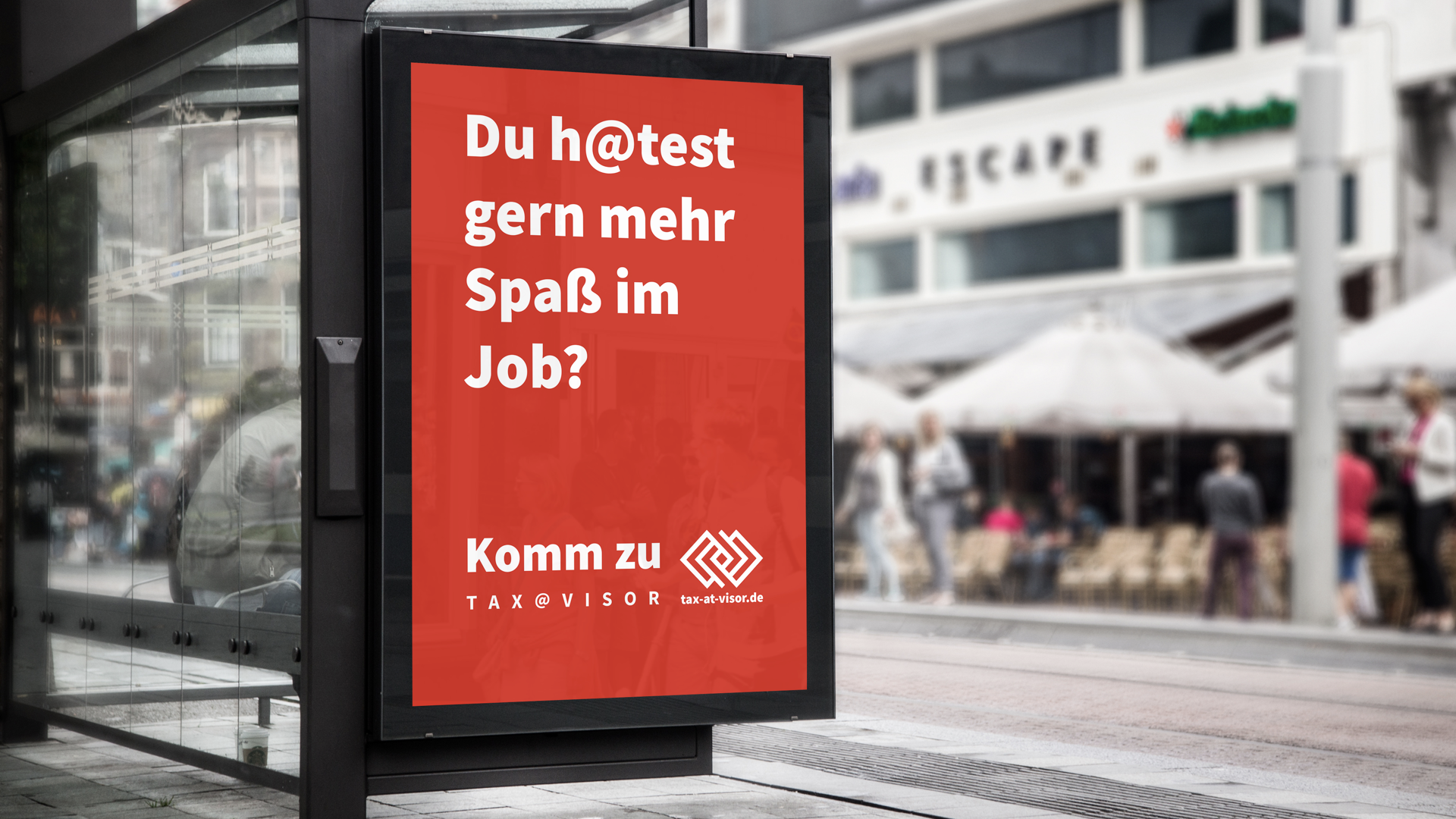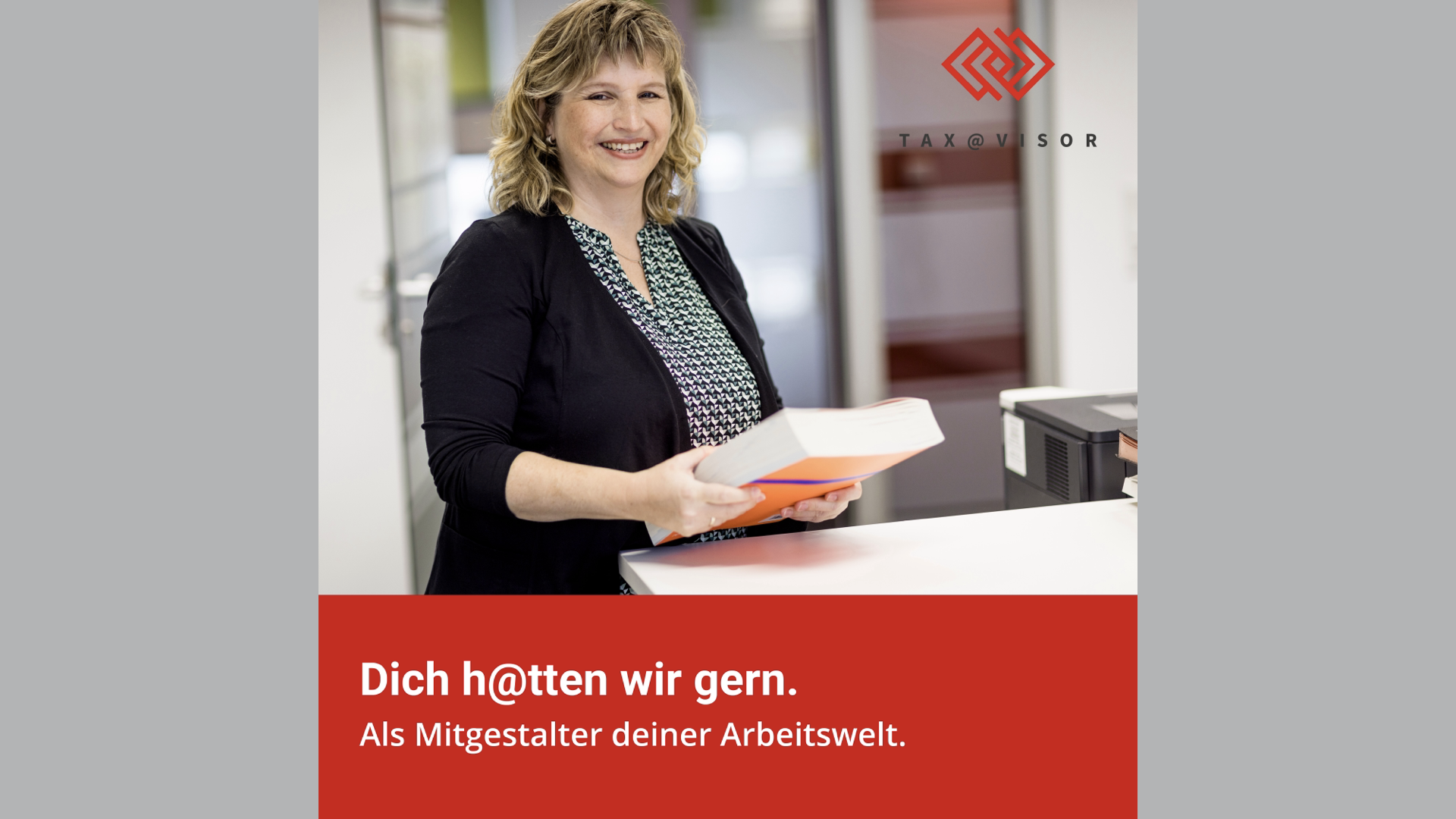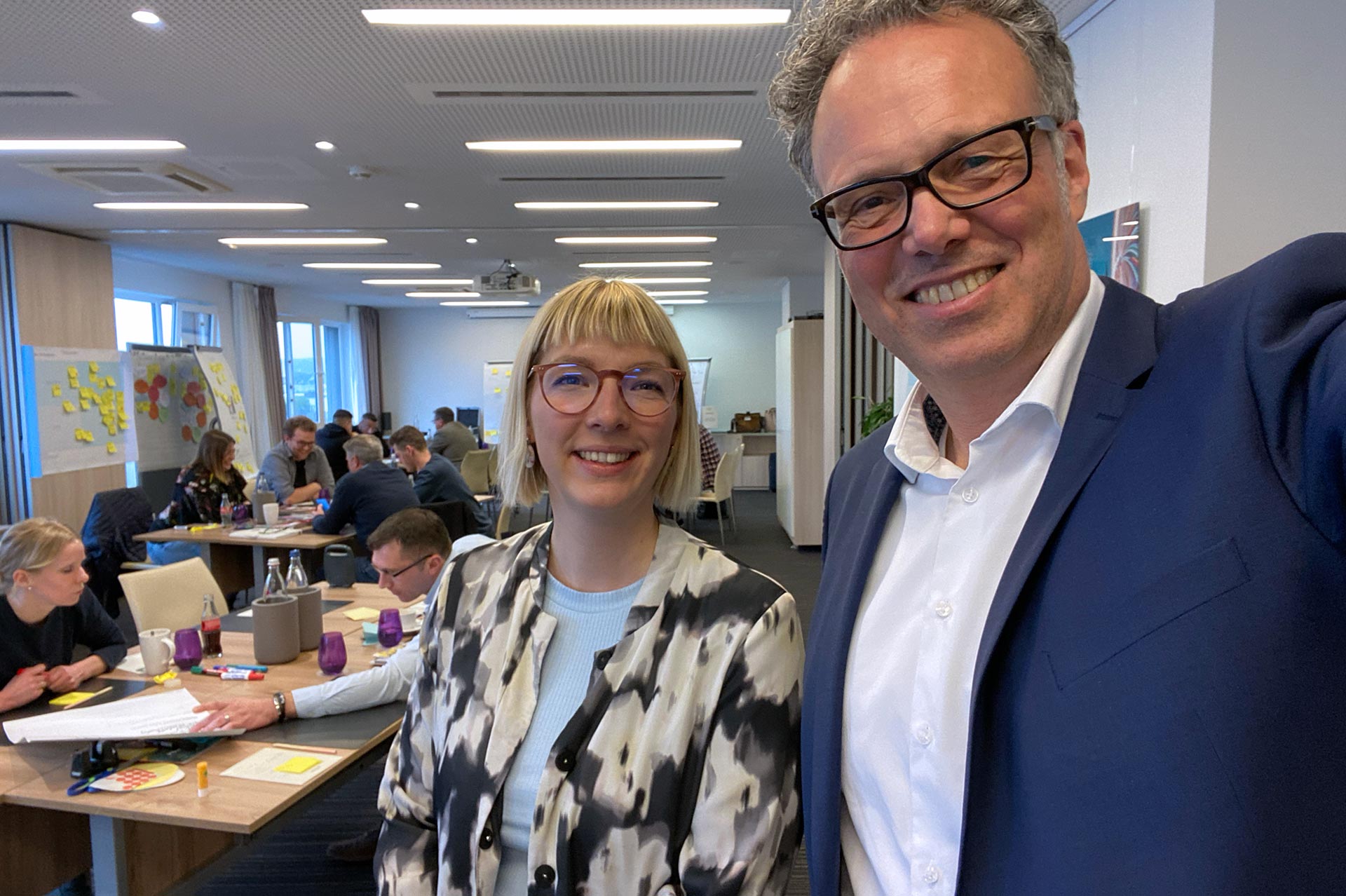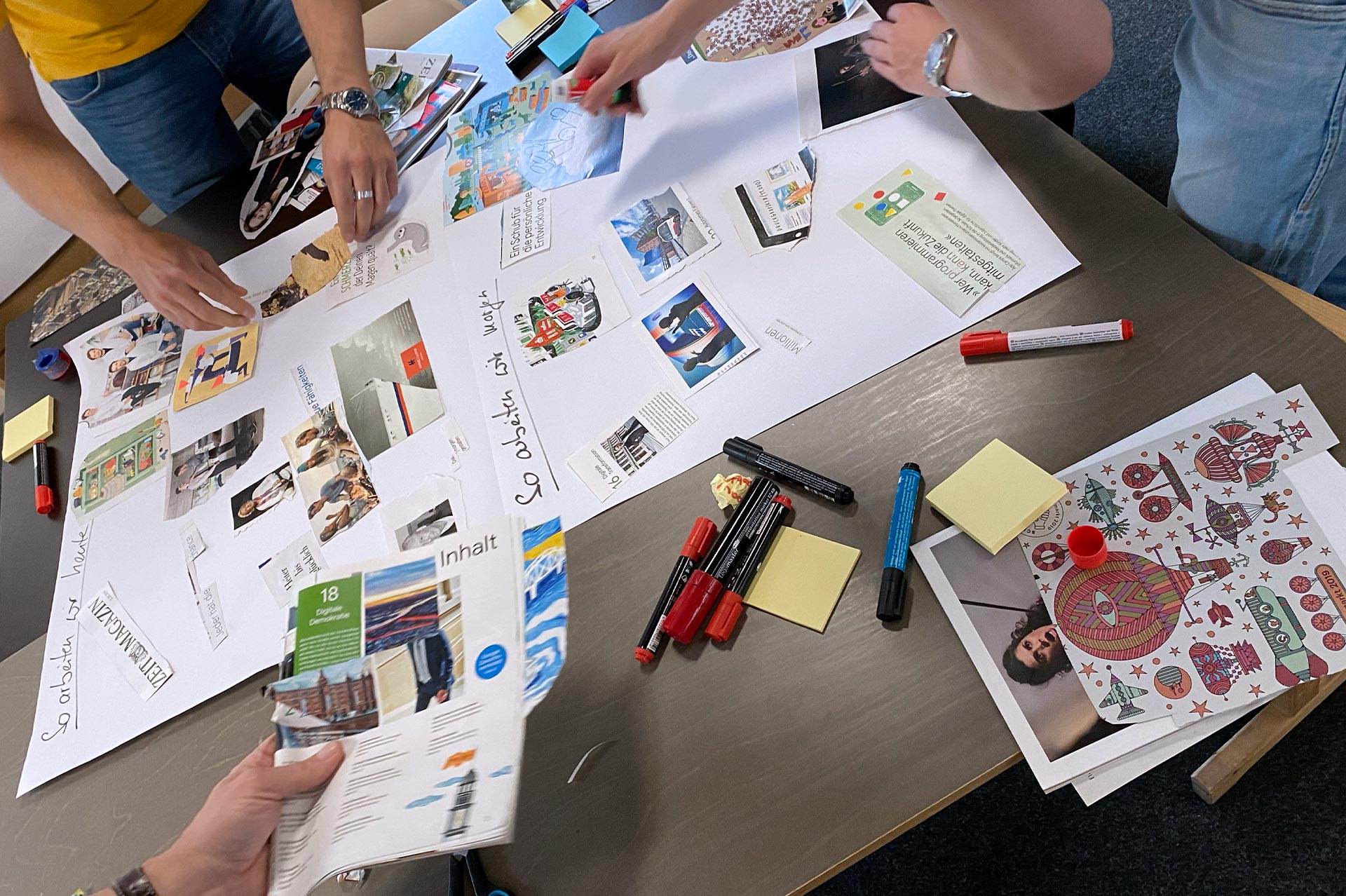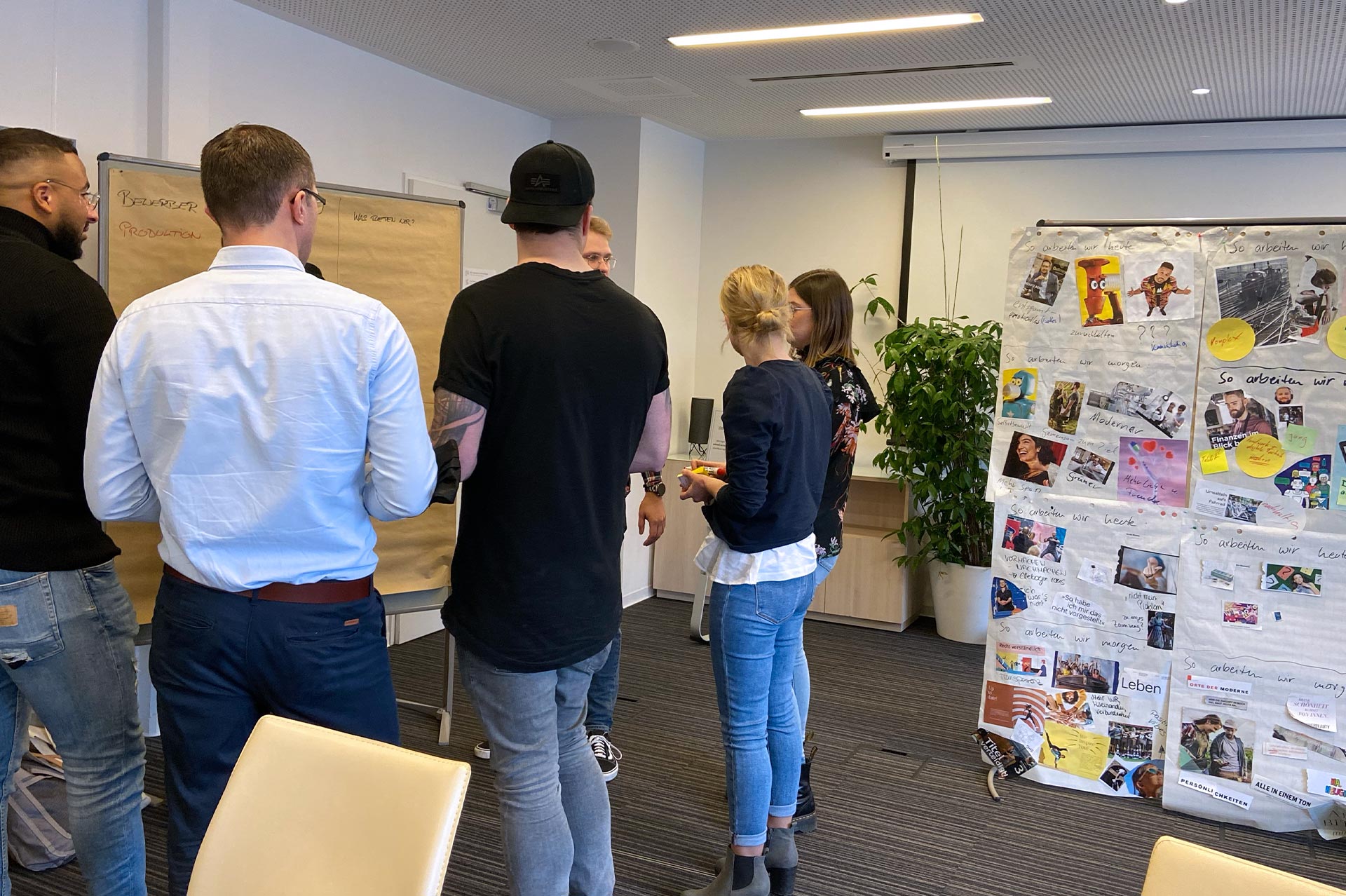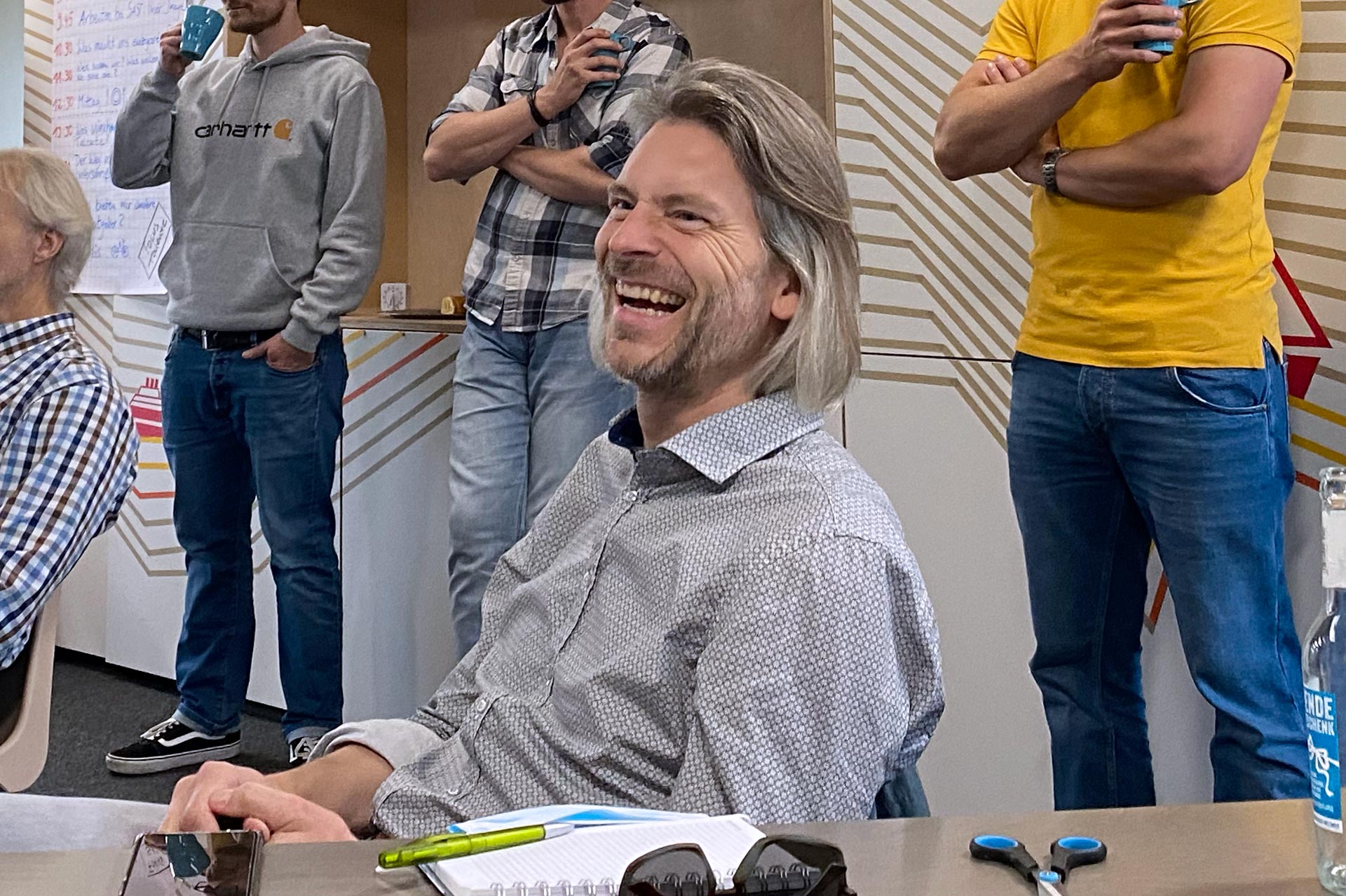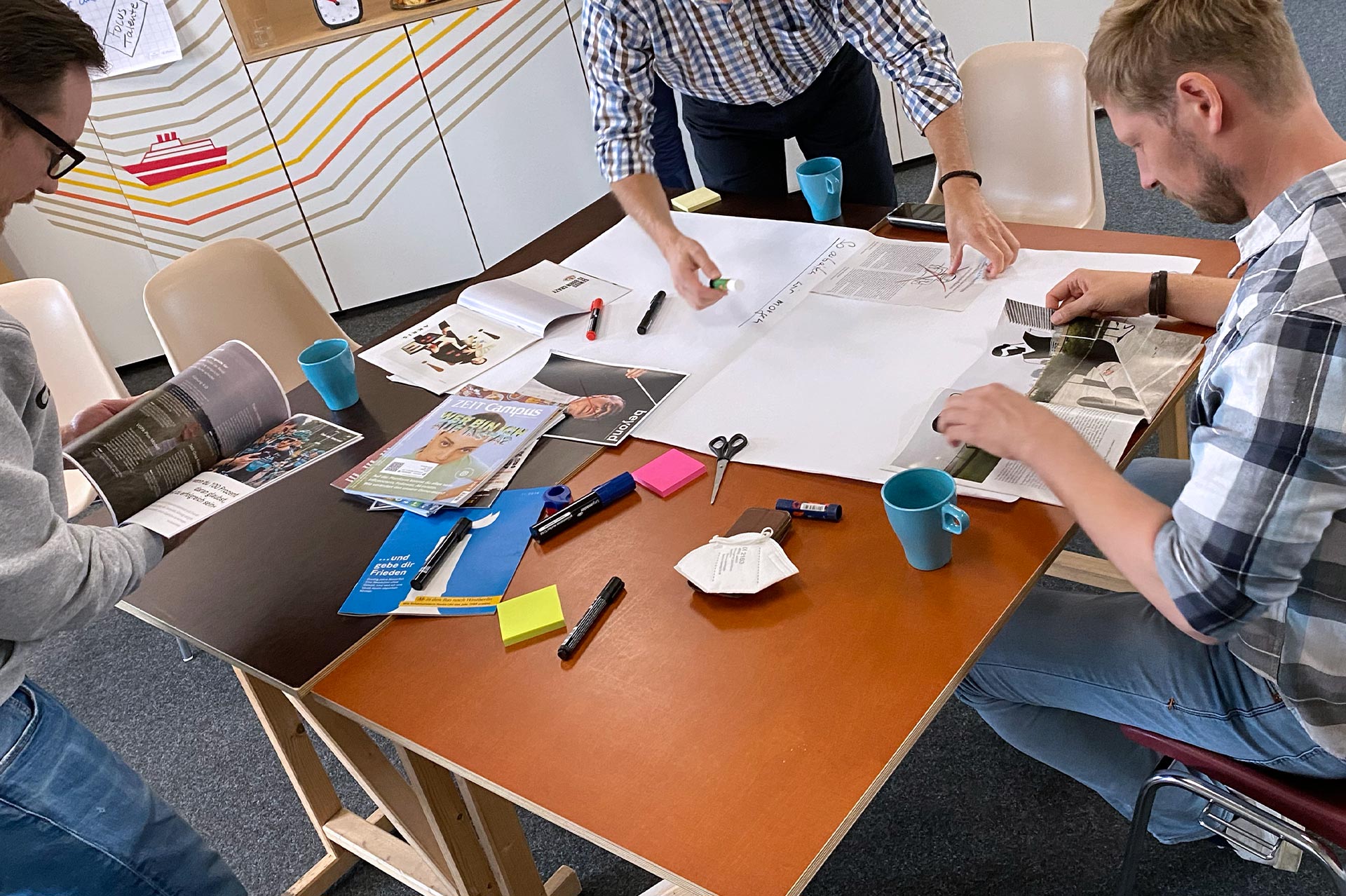Employer Branding
Employer what? Exactly!We'll explain it to you.
What is employer branding?
Employer branding is the process of giving your company a strong employer brand. Similar to how you align your corporate brand to your customers, you extend the alignment of the corporate brand to your employees and those who will become them.
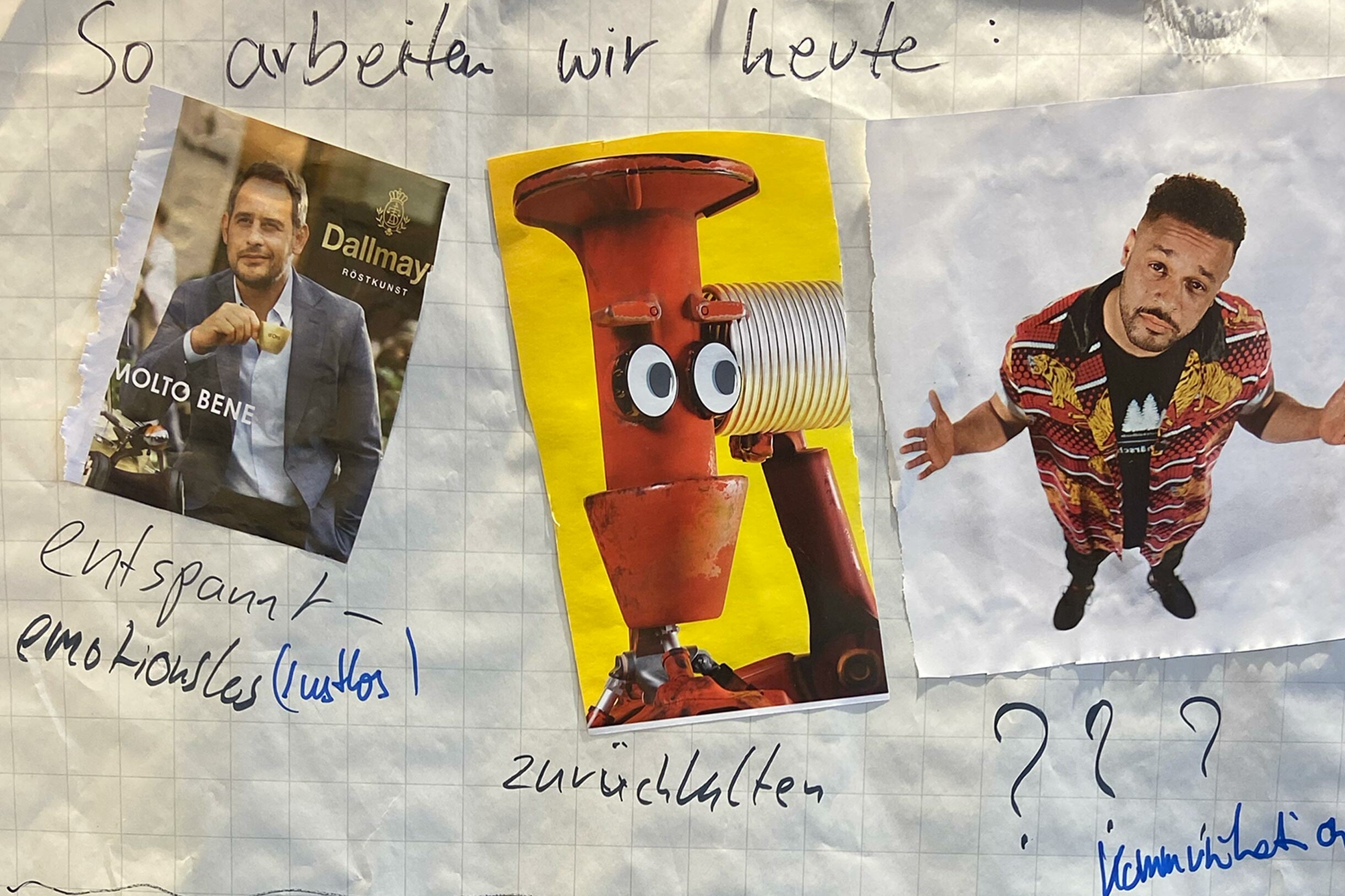
Important in the employer branding workshop:
Leave the beaten track and approach the topics in a new way. That's why we use visuals for inspiration.
This brings new insights.
Double your applicant count.
Your recruiting film could look like this:
Image film for our client SAST Solution for the employer branding campaign
Who should do employer branding?
Employer branding is usually carried out professionally by corporate groups. But it also makes sense for companies that do not yet have a historically developed employer image. A position "at Daimler", for example, promises a lifetime job guarantee, while start-ups and medium-sized companies first have to define themselves as employers so that they stand out positively from the competition. Since they often cannot keep up with the high remuneration and additional benefits of the corporations, smaller companies have to focus on other values. Flat hierarchies, team spirit and above all personal development play an increasingly important role in the evaluation of employers.
85% of all employees have little or no emotional attachment to their employer.
Source: Gallup "Engagement Index Germany 2016″.
What is the goal of employer branding?
The goal of employer branding is to get better applicants faster and to motivate existing employees by building an emotional bond and to bind them to the company in the long term. Many studies from the UK and the USA show that strong employer brands contribute to identification and willingness to perform and reduce sick leave and office theft.
Emotional factors are decisive.
Creative tasks, such as making collages, open up access to the emotional world of the participants and pave the way to a holistic employer positioning.
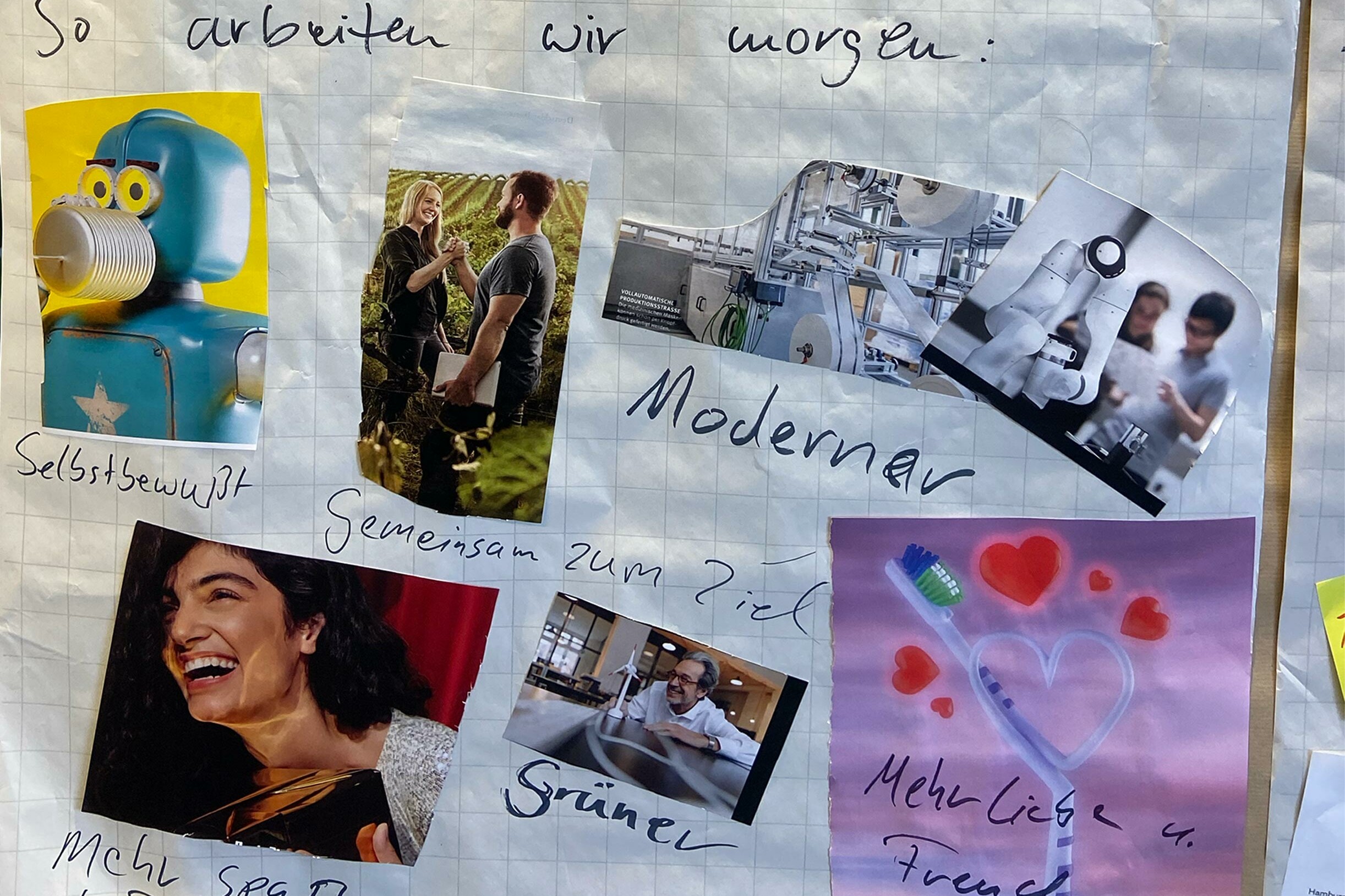
What are the challenges in employer branding?
The challenge is to seamlessly extend the existing communication to customers and other stakeholders to employees and potential talents. The focus should be on the emotional bond. Numerous studies show that the success factors for employer attractiveness are less the negotiable factors such as salary, training opportunities, flexible working hours or pension provision. These factors tend to be the standards and are taken for granted. If you really want to stand out, you have to put soft features in the foreground, such as nice colleagues and superiors, appealing work content, responsibility or appreciation. The attractive presentation of these emotional factors in combination with the standard factors is the key to a successful employer brand.
HOW TO EMPLOYER BRANDING
How do I launch a successful employer branding campaign?
1. define your KPIs and who you want to target
2. set a budget for the first year and plan media use
3. start a workshop with internal and external talent from many areas to define and align your messages to your target groups.
1. define a clear positioning as an employer brand from the results of the workshop. This positioning should be in line with your existing corporate brand.
2. look at your competitors and benchmark so that you are ahead with your campaign.
3. write a story for each target group and think about how these stories can best be staged: as a video, with photos, as a social media post.
4. make an editorial plan, which story you link to which benefits and distribute on which channel.
Plan internal and external resources for campaign implementation. Take into account milestones such as job fairs and major company events where you should have material ready.
1. now it's time to get started: assemble a team of project managers, strategists, copywriters and designers to meet all the requirements of an employer branding campaign.
2. initially create texts, images and films independently of their respective use. In most cases, you can tailor the content to the respective media: Shorten texts, subtitle films, etc.
3. start with the simple things:
03a. Adapt the texts on your job page and on your job advertisements.
03b. Match the content with the job portals such as Kununu, Xing, etc. and make sure that you address them consistently.
4. motivate your colleagues to be part of the content creation: whether it's texts, photos or videos, everything can help to create a lively impression.
5. create your image materials with a professional photographer and a professional videographer team. You will need these materials for communication at fairs, on job portals or on your website.
6. your website is and remains your central hub: enable talents to get a nearly complete picture of you as an employer on your job page. Introduce your employees and bosses here, describe the jobs in detail and whenever possible with short video sequences, give a vivid impression of your everyday life.
7. transfer this content to social media as well and thus ensure a broad and viral distribution of your content.
8. also use paid social media campaigns to further increase your reach.
9. keep comparing the successes. Stay in close contact with your colleagues and observe how the quality of applicants and the motivation of existing employees changes over the course of the campaign.
Always adapt the campaign to new circumstances. Keep tweaking all the parameters of your campaign to keep your finger on the pulse of the employer market.
Employer branding measures: How do I prepare an employer branding process?
A. Get a picture of your company as an employer
First, we look at the company and search for answers to the following questions:
Why do you all actually work here?
First of all, it is important to describe your own company as an employer. In our workshops we ask employees why they actually work in this company. Depending on the length of service, very different and valuable insights come together. One person feels particularly comfortable in the team, the other can identify with the purpose.
What is it like to work for you?
In a further step, we ask how employees perceive their own company as an employer and how they will be perceived as an employer in the future. In our workshops, we have the participants present this as collages of visuals to free them from the usual thought patterns and allow for new perspectives. In the process, we learn a lot about what can improve your company as an employer. Sometimes it's amazingly simple things, like installing a fruit basket.
What makes you unique as an employer?
This is the crucial question in every workshop. Very few companies have singular advantages to offer. At this point, a bundle of topics usually crystallises that is attractive to employees as a whole. In the course of the discussion, the participants often describe a unique atmosphere that everyone is proud of. We use atmosphere and topic clusters as a basis for developing an employer branding campaign that appeals both cognitively and emotionally.
Who are you looking for?
If you know what you offer, you should be clear about who you are looking for - and tailor your offer to the target groups. After all, high-calibre developers usually have very different wishes for an employer than, say, back-office staff. Here we find out who you are talking to and how you should hierarchise your offers to create large intersections.
Where are you currently seen?
Many companies already have a jobs page on their website. But what about social media, job fairs or recruiting through their own employees? What about internal communication? Do you draw attention to yourself with emotional images and videos? These points are recorded here and sorted according to urgency. This creates a clear picture of which measures should be tackled and with what priority.
B. Look at your company through the eyes of your talents
After finding out who you are and who you are looking for, we look at your business with existing and new talent and ask ourselves the following questions:
What is going on in your talents?
Together we imagine what is going on in the minds and hearts of the talents who work or are supposed to work for you. Ideally, we can ask participants who have not yet worked for you or who have only recently started working for you and those who have been with you for a longer period of time. With the design thinking tool Empathy Map, we get to the bottom of the inner life and end up with a clear breakdown of the Pains and Gains. Above all, we understand the target groups much better and can check whether our offers are really relevant as an employer. At this point, we have the opportunity to rethink and adjust the initially defined benefits.
Who do you actually have to stand up to?
It's a good feeling when you have your benefits clearly arranged on the plipchart. But what do the others offer? To answer that, let's imagine we are at a job fair. A candidate comes to our stand and tells us what he has just been offered at another stand. The other stand belongs to a competitor whom we have previously identified as a fierce competitor for workers. The benefits of the competitor are now compared with our benefits. In this way we find out how valid the positioning we have worked out so far is. And we can adjust it accordingly.
What is an Employer Journey?
Now we imagine various job seekers - or ideally have them right there in the workshop - who have just heard about your company and are now making their way to you, which we call the employer journey. This is where we usually notice the deficits quite quickly: Yes, the social media could be played a little more often and the content could give a slightly more authentic picture of the company. In addition, the video posts are far too rare. They could also be placed on the job sub-page.
What is important in employer branding?
Stefan Weder, explains the 1×1 of employer branding
10 tips and tricks for successful employer branding
1.
Get your colleagues on board
Employer branding is not something you can concoct in the privacy of your own home. You have to talk to your colleagues and those who are going to be. A good starting point can be a facilitated workshop. But after that, the collaboration really starts: In order to play on all the relevant channels with the relevant content, you need content that can only succeed in cooperation with everyone.
2.
Show yourself authentically
Try to give an unvarnished picture of your company.
3.
Define who suits you
Have you ever thought about who fits into your company? Who can move confidently in flat hierarchies and who needs clear instructions? Which people do you intend to target specifically? Those who have language difficulties or inadequate training? Get a picture with your colleagues of who you want to include in your midst. A clear discussion with the team often brings amazing results.
4.
Take applicants into their everyday life
Use pictures, interviews and videos to present an up-to-date and realistic image of your company to the outside world. Especially if you have little tangible unique selling proposition, a glassy view of your company's everyday life helps people to identify with you quickly.
5.
Build trust
You can't buy trust, you get it as a gift. Nevertheless, you have to do something for it. In this case, you should create maximum transparency and present all areas and hierarchical levels of your company. Shoot a short (!) video in which the boss or bosses introduce themselves and, above all, show their human side. You should also do this with colleagues from many areas so that applicants get the chance to see who they will be working with and who will have something to say to them.
6.
Tell exciting stories
In every company there are great stories that encourage people to be there: Joint trips, barbecues, sporting events or even a sabbatical that was granted. These stories form the backbone of a working community and should best be told in words and moving pictures.
7.
Use your employees as walking priests.
The best ambassadors for your company are your employees. They can give the best insights and often have enough contacts in their environment from previous jobs and apprenticeships that they can contact. Make your colleagues ready to speak and equip them with attractive materials and arguments. A nice reward for successful contacts will do the rest.
8.
Use the employer branding process to better position yourself as an employer.
In our workshops, we often come across weak points or optimisation potentials that show you what you can improve in order to present yourself even more attractively as an employer. These can also be small things, such as regular office hours with the boss for everyone.
9.
Use all the channels where your talents are on the move
Even if you haven't been to job fairs or social channels before: Ask yourself where your candidates and colleagues are hanging out and show your presence there. With content that is tailored to the medium and, in the best case, shared. This can be achieved with a well thought-out campaign structure using limited resources. Above all, keep an eye on the job portals. A lot is happening here - and you should not let the game out of your hands.
10.
Employer branding is never finished
Even if you haven't been to job fairs or social channels before: Ask yourself where your candidates and colleagues are hanging out and show your presence there. With content that is tailored to the medium and, in the best case, shared. This can be achieved with a well thought-out campaign structure using limited resources. Above all, keep an eye on the job portals. A lot is happening here - and you should not let the game out of your hands.
10 tips and tricks for successful employer branding
1. get your colleagues on board
Employer branding is not something you can concoct in the privacy of your own home. You have to talk to your colleagues and those who are going to be. A good starting point can be a facilitated workshop. But after that, the collaboration really starts: In order to play on all the relevant channels with the relevant content, you need content that can only succeed in cooperation with everyone.
2. show yourself authentically
Try to give an unvarnished picture of your company.
3. define who suits you
Have you ever thought about who fits into your company? Who can move confidently in flat hierarchies and who needs clear instructions? Which people do you intend to target specifically? Those who have language difficulties or inadequate training? Get a picture with your colleagues of who you want to include in your midst. A clear discussion with the team often brings amazing results.
4. take applicants into their everyday life
Use pictures, interviews and videos to present an up-to-date and realistic image of your company to the outside world. Especially if you have little tangible unique selling proposition, a glassy view of your company's everyday life helps people to identify with you quickly.
5. build trust
You can't buy trust, you get it as a gift. Nevertheless, you have to do something for it. In this case, you should create maximum transparency and present all areas and hierarchical levels of your company. Shoot a short (!) video in which the boss or bosses introduce themselves and, above all, show their human side. You should also do this with colleagues from many areas so that applicants get the chance to see who they will be working with and who will have something to say to them.
6. tell exciting stories
In every company there are great stories that encourage people to be there: Joint trips, barbecues, sporting events or even a sabbatical that was granted. These stories form the backbone of a working community and should best be told in words and moving pictures.
7. use your employees as walking priests.
The best ambassadors for your company are your employees. They can give the best insights and often have enough contacts in their environment from previous jobs and apprenticeships that they can contact. Make your colleagues ready to speak and equip them with attractive materials and arguments. A nice reward for successful contacts will do the rest.
8. use the employer branding process to better position yourself as an employer.
In our workshops, we often come across weak points or optimisation potentials that show you what you can improve in order to present yourself even more attractively as an employer. These can also be small things, such as regular office hours with the boss for everyone.
9. use all the channels on which your talents are on the move
Even if you haven't been to job fairs or social channels before: Ask yourself where your candidates and colleagues are hanging out and show your presence there. With content that is tailored to the medium and, in the best case, shared. This can be achieved with a well thought-out campaign structure using limited resources. Above all, keep an eye on the job portals. A lot is happening here - and you should not let the game out of your hands.
10 Employer branding is never finished
Even if you haven't been to job fairs or social channels before: Ask yourself where your candidates and colleagues are hanging out and show your presence there. With content that is tailored to the medium and, in the best case, shared. This can be achieved with a well thought-out campaign structure using limited resources. Above all, keep an eye on the job portals. A lot is happening here - and you should not let the game out of your hands.
Our Employer Branding Cases

Interested?
I am Stefan Weder, Managing Director at Blaupause and I am very much looking forward to your inquiry, or a simple Moin Moin.


